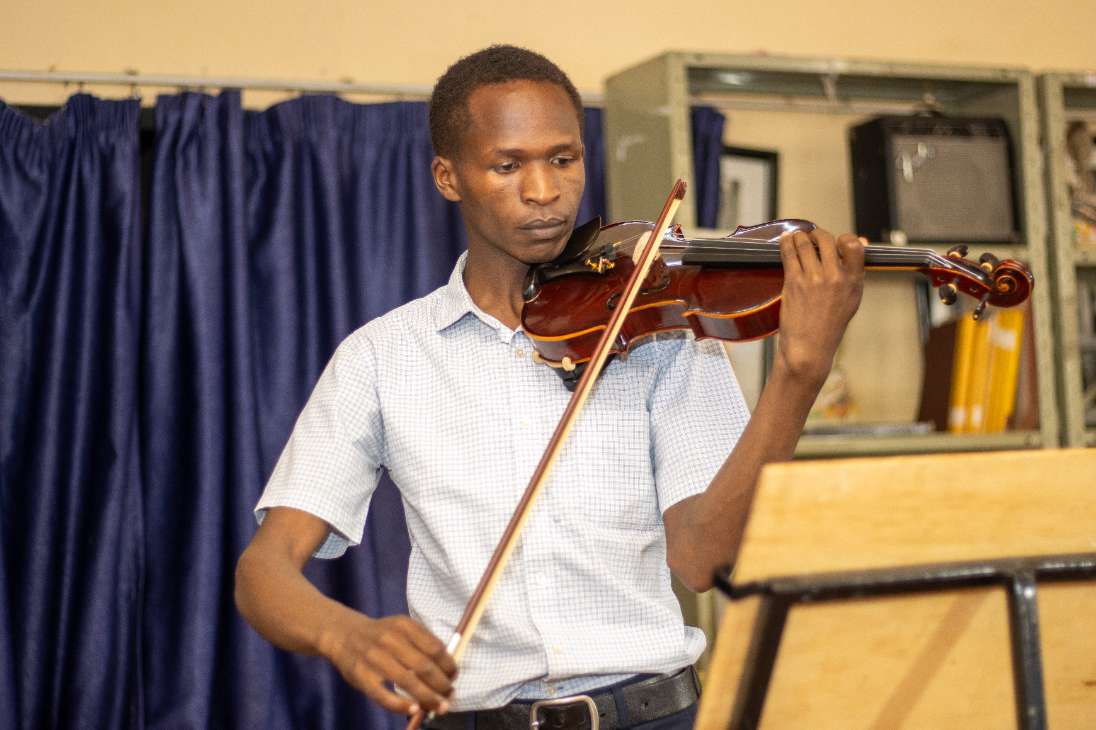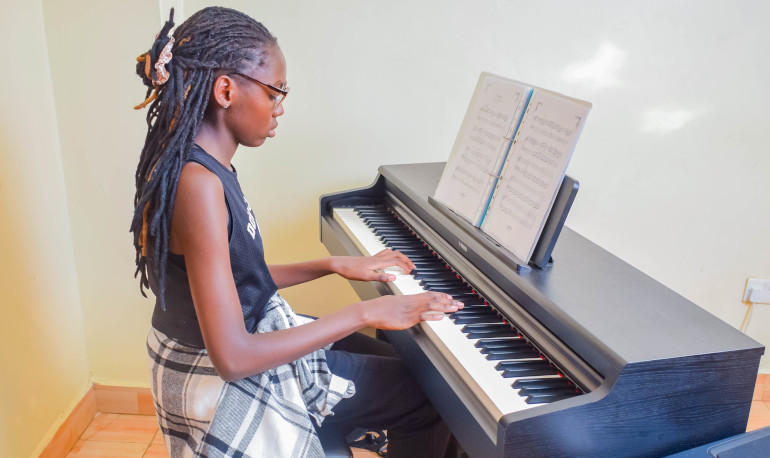How to Practise Smarter: The Power of Chunking and CAMLs in Music Practice
Cheza Music
Nov 12, 2025 at 4:37 pm
0 Comments

Every pianist knows the feeling: a piece that sounds confident in practice suddenly crumbles on stage.
The fingers freeze, a single memory slip breaks the flow.
Recent research by Dr. Amy M. Simpson at West Virginia University reveals that the secret to secure memorization and fluent performance lies in how the brain stores and retrieves musical information.
Two ideas stand out: chunking and CAMLs - Content-Addressable Memory Locations. Together they can completely reshape how you practise your instrument.
1. What “Chunking” Really Means
Chunking is the way your brain naturally organizes information.
Instead of remembering hundreds of individual notes, it groups them into small, meaningful patterns - phrases, rhythmic figures, or harmonic ideas.
Each chunk acts as a building block of memory.
Simpson’s research, building on Bob Snyder’s cognitive work, shows that our short-term memory can hold only about seven items at once. When we practise in big, unbroken sections, we overload that limit.
Chunking breaks the music into digestible pieces, helping us focus, repeat accurately, and strengthen the link between short- and long-term memory.
In practical terms:
- Work on two- to four-bar sections at a time.
- Practise them slowly and accurately until they feel natural.
- Overlap chunks as you join them - for example, bars 1-3, then 3-5, then 1-5 - to reinforce transitions.
Over time, these small chunks fuse into larger musical structures. The result? Smoother recall, cleaner playing, and stronger confidence in performance.
2. The Problem with “Associative Chains”
Most musicians memorize pieces as a continuous stream - one event triggers the next. This is called associative-chain memory. It works beautifully until one link breaks. Then the mind goes blank because every following note depends on the previous one.
That’s why many pianists can start only from the beginning of a piece. They’ve built a single chain instead of a map.
3. Enter the CAMLs: Memory Anchor Points
Dr. Simpson highlights the concept of CAMLs (Content-Addressable Memory Locations) - mental anchor points throughout the music that you can jump to directly, without relying on what came before.
A CAML might be:
- the start of a new phrase or section,
- a dramatic chord change,
- a visual landmark on the page,
- a spot with a clear harmonic or rhythmic shift.
Unlike associative chains, which depend on sequence, CAMLs are independent access points - like bookmarks in your score.
In performance, if you lose your place, a CAML lets you restart confidently.
In practice, CAMLs help you test true memorization by starting from any location, not just the beginning.
4. How to Build CAMLs in Your Practice
- Mark natural landmarks. Circle key harmonic or phrase changes in your score.
- Practise starting there. Play short segments beginning from each landmark until you can launch smoothly from any one of them.
- Say it aloud. Describe the cue verbally (“G-major cadence, top of page 2”). Turning it into words strengthens explicit memory.
- Test yourself. Randomly pick a landmark and begin there without hesitation.
- Link to emotion or imagery. The stronger the association, the more reliably the CAML will activate under pressure.
This dual system - fluent associative flow plus independent CAML anchors - gives you both artistry and security.
🔁 5. Chunking + CAMLs = Confident Performance
Together, these strategies form a complete learning loop:
- Chunking builds understanding and precision in small sections.
- CAMLs give you flexible recall anywhere in the piece.
- Both rely on focused attention and deliberate repetition, the hallmarks of expert practice.
When you combine them, you move beyond “playing by feel” to playing with awareness - knowing what you’re doing, where you are, and why each moment sounds the way it does.
6. What This Means for You
Whether you’re a student learning your first sonatina or a teacher guiding advanced repertoire, chunking and CAMLs offer a framework for reliable, expressive, and confident performance.
At Cheza Music School, we encourage our learners to think this way:
“Don’t just play through - build your piece in meaningful chunks and map it with strong memory anchors.”
You’ll spend less time fixing slips and more time making music that feels secure, expressive, and free.
Final Thought
Mastering music isn’t about endless hours of repetition - it’s about training your brain to remember intelligently.
Chunk by chunk, cue by cue, your playing becomes not just memorized, but truly understood.
0 Comments
Categories
|
News |
|
Events |
|
Activity |
Popular Courses

Piano Lessons in Nairobi | Learn Piano At Home Course
We provide piano lessons in Nairobi suitable for children aged 4 and above, as well as adults. Our l...

Guitar Lessons In Nairobi | Learn Guitar At Home Course
Our guitar lessons in Nairobi offer progressive lessons for children from 6 years old and ...

Violin Lessons In Nairobi | Learn Violin At Home Course
We provide violin lessons in Nairobi for kids (6 years and older) and adults. Our lessons cover ever...
Working Hours
Depending on individual teachers since we do homeschooling.
© Copyright 2025Privacy Policy | Developer & SEO Services: Josiah Birai (JoeSEO): 0765 356000




Log in to comment